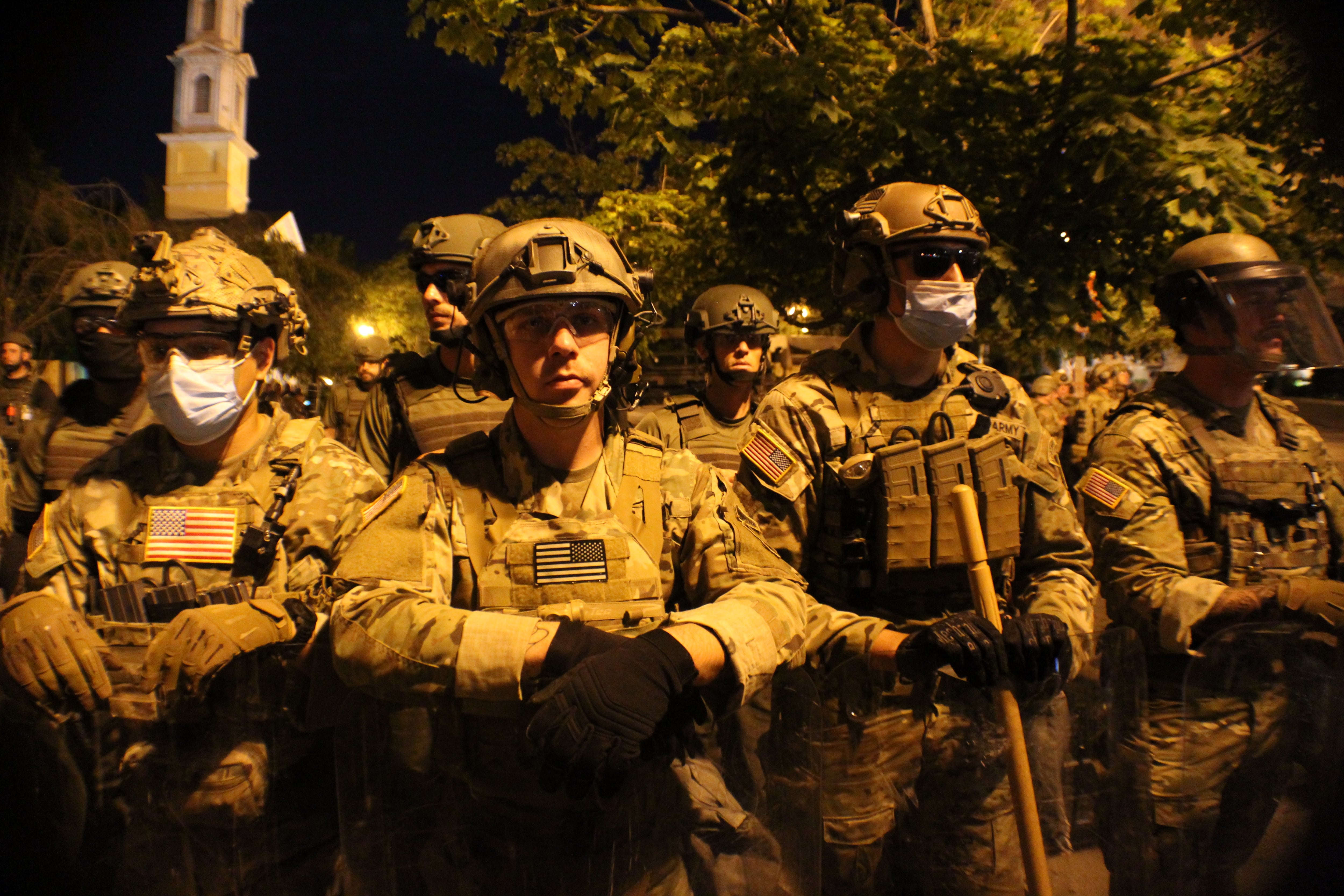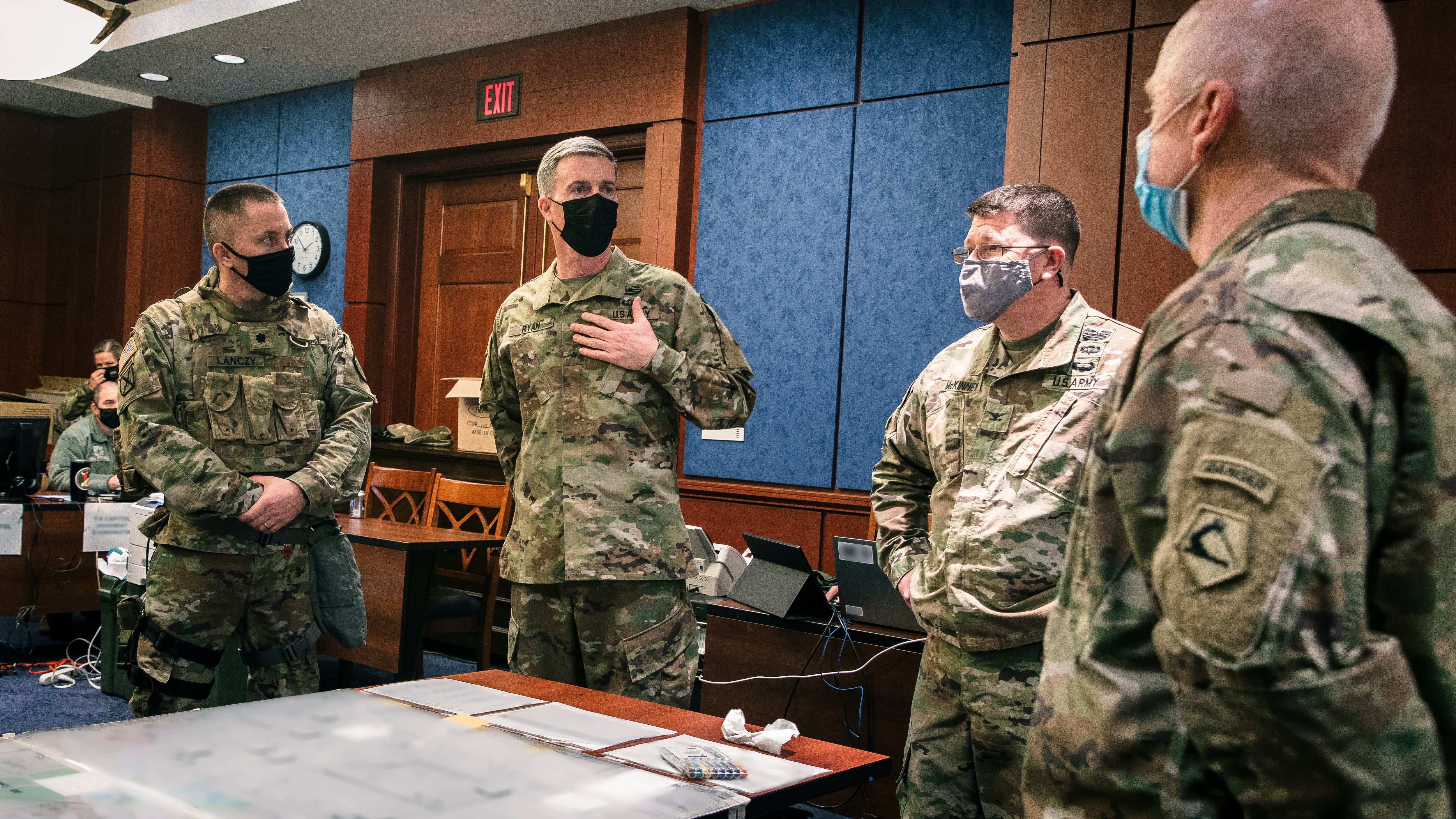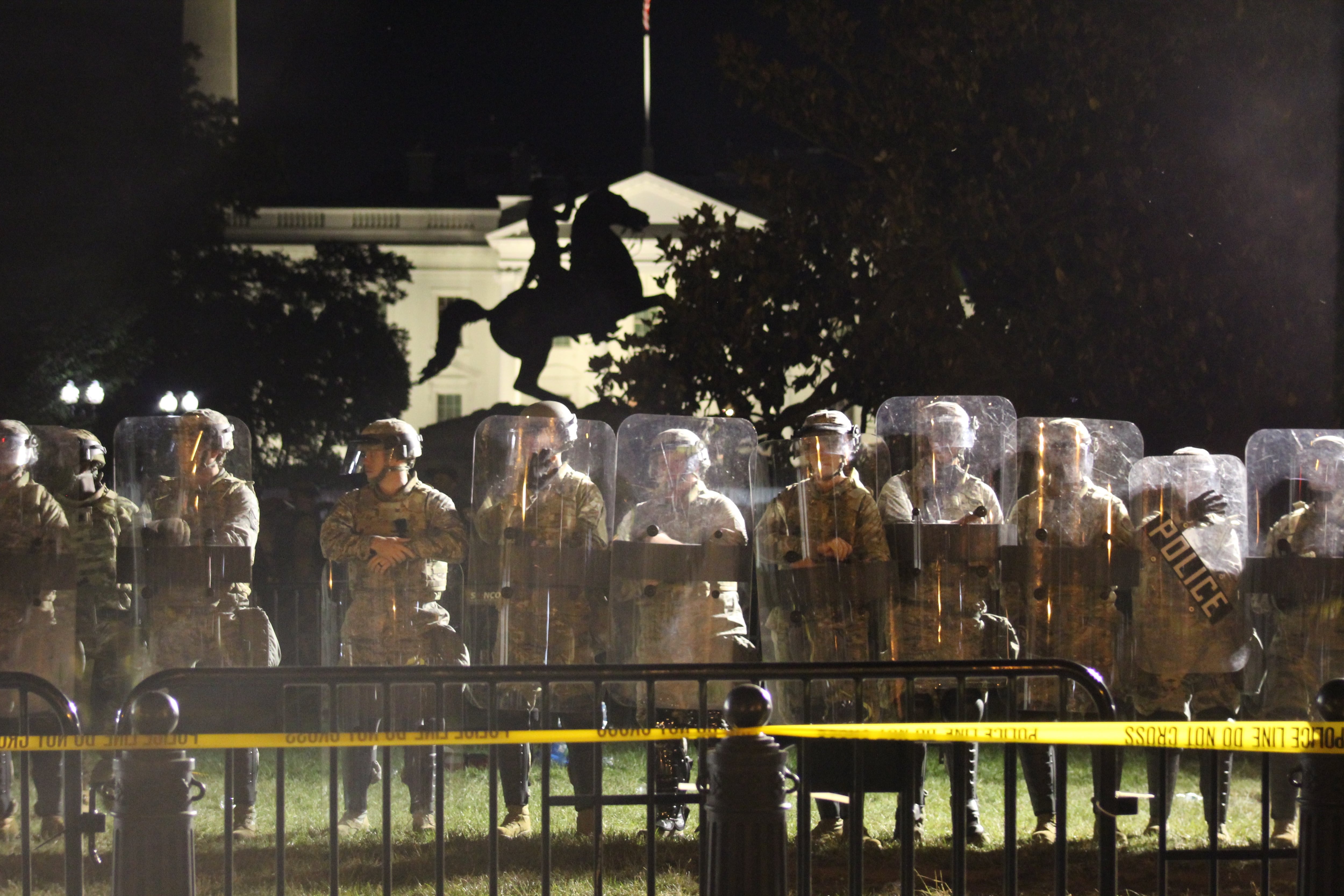The use of a UH-72 Lakota medical helicopter during last summer’s protests in Washington, D.C., which flew low over a crowd and hit them with rotor-wash, was reasonable given the declared emergency, according to a review completed by the Department of Defense Inspector General.
President Donald Trump’s broad guidance to “flood the zone” with military support before the incident on the night of June 1, 2020, justified the use of D.C. National Guard helicopters, DoD IG officials wrote in the review. However, the pilots were ill-prepared to support civilian authorities, as they lacked specific training and procedures to deal with civil disturbances.
The DoD IG “found no supporting evidence” for an earlier Army investigation’s conclusion that deploying medical evacuation assets violated regulations. A waiver is required to use MedEvac helicopters for other missions, but regulation allows deviations during emergencies, the review stated.
The review suggested the D.C. Guard refine training and policies governing the use of helicopters during civil disturbances. After the review found “boiler plate” language in a memo authorizing Guard support, the DoD IG also advised the Pentagon to define “what specific activities constitute domestic surveillance” during future missions.
D.C. Guard officials did not immediately respond to a request for comment. The DoD IG review did not recommend any personnel face punishment.
Guardsmen were tapped during last summer’s protests against police brutality that continued well past midnight multiple evenings, violating curfew in the District. The Guard had experience supporting large events, such as inaugurations, but their existing “plans did not specifically address using aviation assets,” according to the review.
RELATED

The use of helicopters was deemed “reasonable” based on direction from Trump and Defense Secretary Mark Esper, relayed through Army Secretary Ryan McCarthy, instructing the military to “flood the zone” and “use everything available” to protect “federal property and symbols,” the review reads.
Brig. Gen. Robert Ryan, who led the D.C. Guard’s Joint Task Force on Civil Disturbance, was offered Guard helicopters, including ones with MedEvac markings, to support his mission.
“There was no regulation or policy that prohibited the [D.C. Guard] from using its helicopters to support civil disturbance operations,” DoD IG officials wrote in their review.
Ryan was faulted, however, for not providing clear mission guidance to the helicopter pilots. Although those failures were not an “issue of misconduct,” the DoD IG recommended the D.C. Guard review Ryan’s actions “as matters of performance.”

D.C. Guard pilots were poorly prepared for the challenges they faced last summer.
The aircrews’ Rules for the Use of Force were tailored to ground operations, and the pilots were not trained on integrating and using aviation assets in civil disturbance missions — both of which the DoD IG recommended be fixed.
The pilot who conducted the “low hover” over protesters testified that he believed the mission was to “look at” a crowd near the Capitol One Arena and possibly encourage them to disperse, according to the review.
The pilot thought police requested the mission, the DoD IG review stated, and the aircrews did select the UH-72 to perform the maneuver to limit rotor-wash.
RELATED

“Despite a lack of civil disturbance operations training, the crew of a UH-60 helicopter hovering over the demonstrators observed that if they descended below a certain altitude, their rotor-wash would reach personnel on the ground,” DoD IG officials wrote. “They ascended to a higher altitude and called for a smaller UH-72 helicopter with less rotor-wash to replace them over the scene.”
The use of helicopters over a crowd of protesters raised objections, including in Congress, partially because of the image it conjured in many people’s minds of a heavy-handed military presence in the District.
“Clearly, the images of a UH-72A, particularly one marked with a Red Cross symbol, hovering over a crowd may have raised questions and concerns; however, [the Army IG] found this maneuver did not violate plans or regulations in place at the time, but identified an area for improvement and clarifications in Army policy,” DoD IG officials wrote.
The review also noted that Esper’s approval letter for the use of D.C. Guard assets used “boiler plate” language about how D.C. Guardsmen and assets could not “be engaged in domestic surveillance of U.S. persons during this period of support,” the review reads.
“Witnesses could not provide us with an explanation of the term “domestic surveillance” used in the Secretary’s letter or its meaning under any DoD standards,” DoD IG officials wrote. “Accordingly, we recommend that DoD review and update guidance to define what specific activities constitute domestic surveillance in civil disturbance operations.”
Kyle Rempfer was an editor and reporter who has covered combat operations, criminal cases, foreign military assistance and training accidents. Before entering journalism, Kyle served in U.S. Air Force Special Tactics and deployed in 2014 to Paktika Province, Afghanistan, and Baghdad, Iraq.




